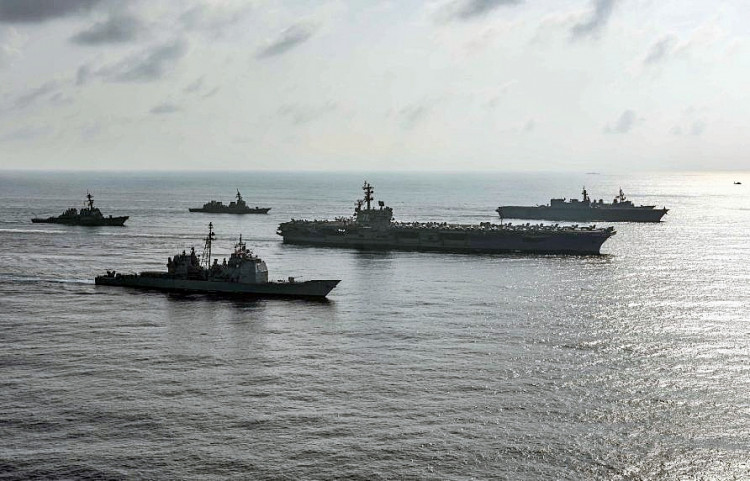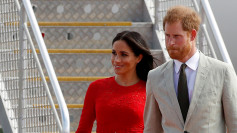Japan continues its largest show of maritime force in Asia since World War 2 by sending the helicopter carrier, JS Kaga (DDH-184), and two destroyers to patrol the South China Sea.
Kaga and her two escorts, the Akizuki-class destroyer JS Suzutsuki (DD-117), and the Murasame-class destroyer JS Inazuma (DD-105), which together comprise Escort Flotilla Four, are currently docked in the Philippines. They arrived at the Philippines on Sept. 1.
Before docking in the Philippines, Escort Flotilla Four joined the U.S. Navy's USS Ronald Regan (CVN-76) and her Carrier Strike Group Five in joint exercises in the South China Sea. The exercise involved formation sailing; maneuvering in the formation and replenishment-at-sea operations, among others.
In June 2017, the Japan Maritime Self-Defense Force (JMSDF) sent Kaga's sister ship, JS Izumo (DDH-183) and her escorts, on a three-month-long deployment to the South China Sea in what was, at the time, Japan's strongest display of naval power since World War 2.
The follow-up mission by Kaga and her Escort Flotilla Four sends a strong message to China the JMSDF is prepared for any eventuality, including armed conflict, said military observers. Japan's undeniable response to Chinese aggression in the South China Sea has been to greatly increase its naval power and presence in this disputed area.
The arrival of Escort Flotilla Four in the Philippines was followed two days later by a statement from Tokyo saying the rapid pace of China's and Russia's military activities represent imminent threats to the peace and stability of Asia.
Minister of Defense Itsunori Onodera said China has been unilaterally escalating its military activities over the past years. The People's Liberation Army Air Force (PLAAF) has carried out new operations in the skies around Japan while the People's Liberation Army Navy (PLAN) sent one its nuclear attack submarines to patrol the East China Sea close to Japan's Senkaku Islands, which China claims to own.
China has been rapidly improving its military strength and increasing its military activities at a rapid pace, said Onodera at the annual gathering of the military leaders of the Japan Self-Defense Force (JSDF), Japan's armed forces.
He also pointed out China is unilaterally escalating its military activities in the East China Sea and in the skies around Japan. These Chinese moves have become a significant concern for Japan's defense.
Onodera also said Russia was also increasing its military deployments in the vicinity of Japan. He noted that Russia recently deployed surface-to-air missile batteries to the disputed Southern Kuril Islands. Japan is seeing movements that confirm Russia's intent to again accelerate its military activities in the Far East.
Japanese Prime Minister Shinzo Abe, however, will visit China in October. Japanese business firms have stated their desire for closer ties with China to boost trade.






